Salmon In Hot Water
With rising water temperatures increasingly affecting Scotland’s rivers, Atlantic salmon - so dependent on cold, clean water - are crying out for the woodlands that once shaded and fed them.
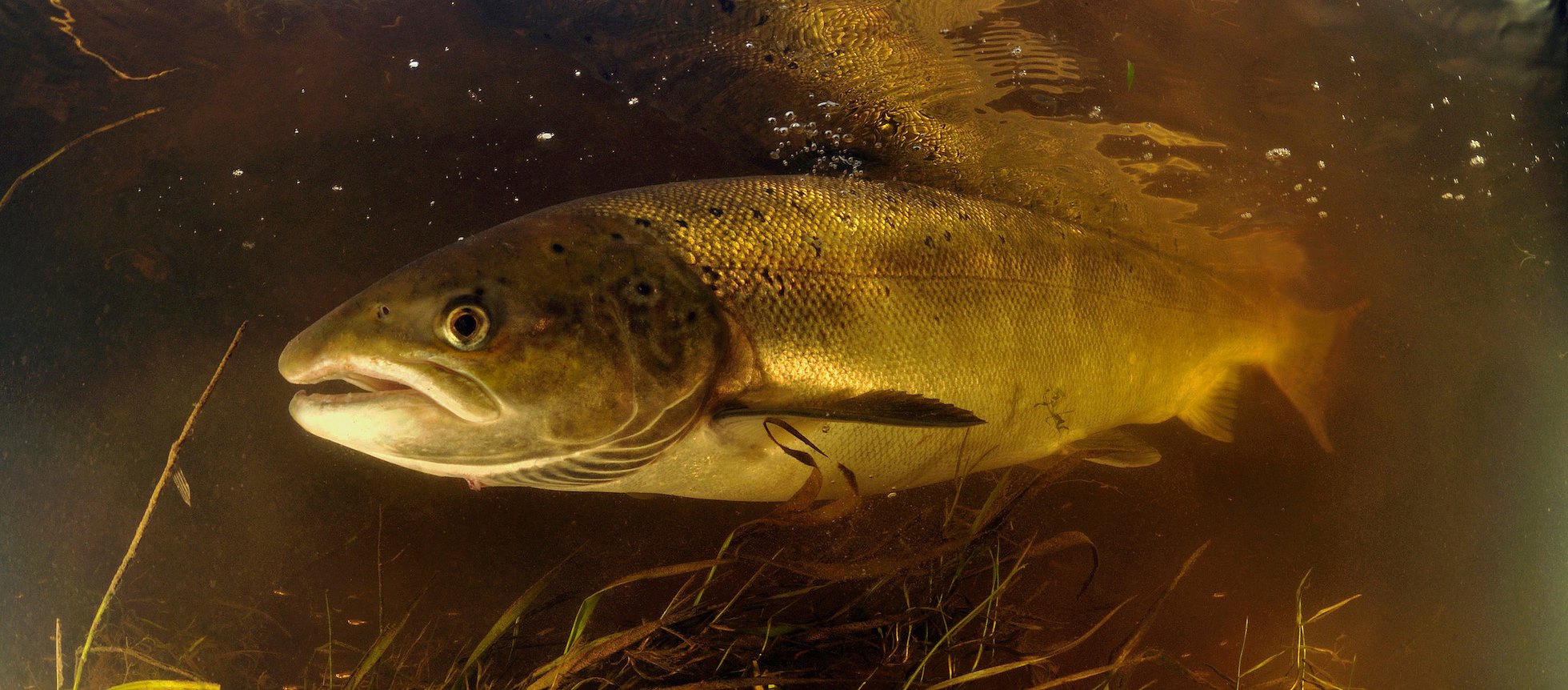
6,000 years ago, a rich, dynamic woodland ecosystem stretched across 60% of Scotland’s land area. These were diverse forests of Scots pine, oak, rowan, birch, hazel, alder, aspen and willow; a complex community of shrubs and bushes, tall trees, tiny trees, dead and dying trees, festooned in lichens, liverworts and mosses, all intertwined in a constantly evolving system.
Flanking Scotland’s rivers and lochs, these woodlands were shaped by beavers, creating fresh coppice growth, new wetlands and backwaters, raising the water table and toppling insect-laden trees into and alongside the river. The decaying timber provided food and sanctuary for more invertebrates, both above and crucially, below the water, as well as casting dappled shade across the river’s surface.
Spent salmon, exhausted after an epic journey from freshwater to sea and back again, fed brown bears, wolves, eagles, ospreys and otters, before the precious marine nutrients found in their carcasses, were taken up by the soil nourishing fresh plant and tree growth.
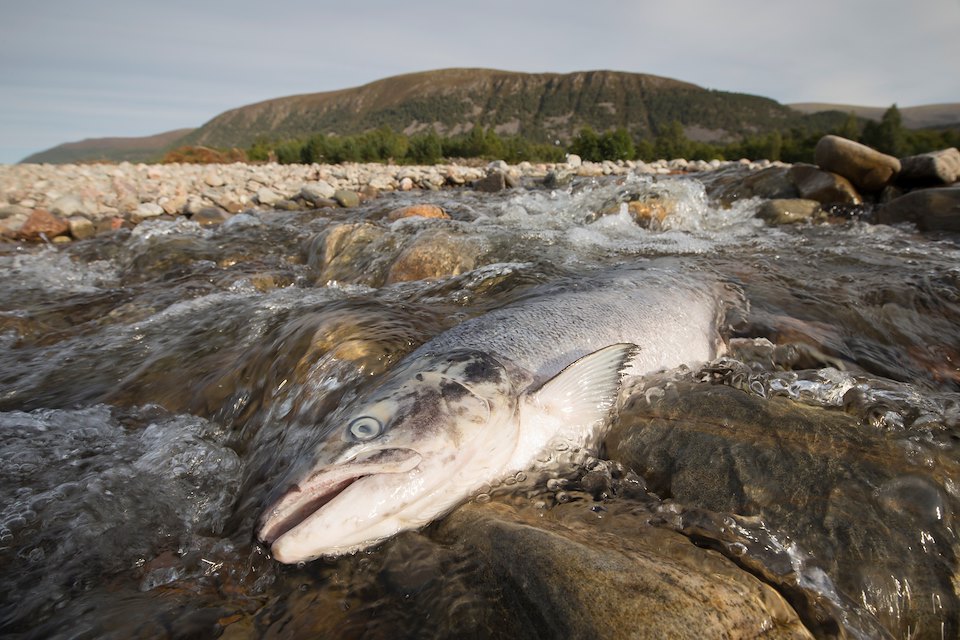
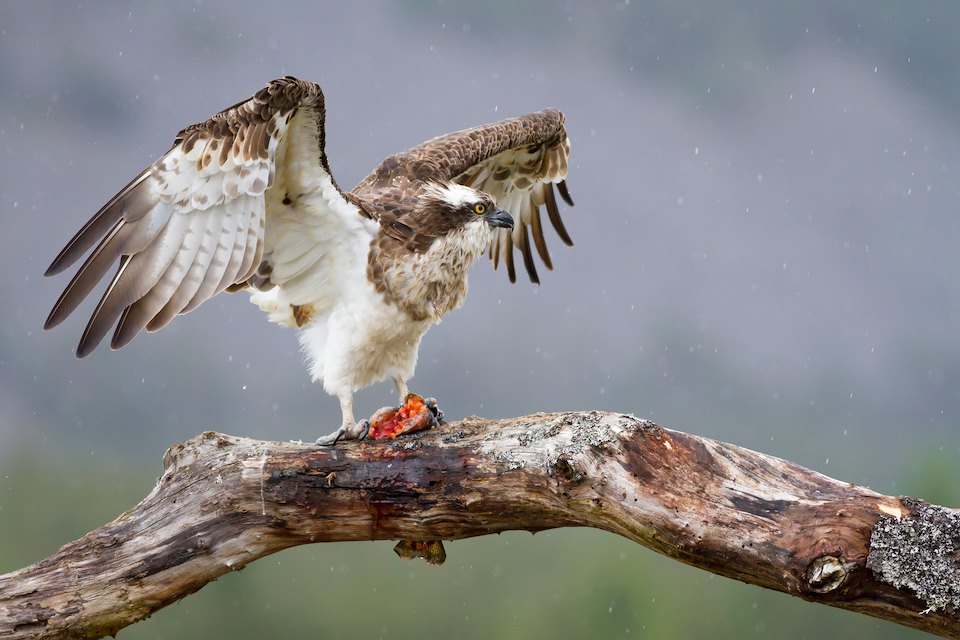
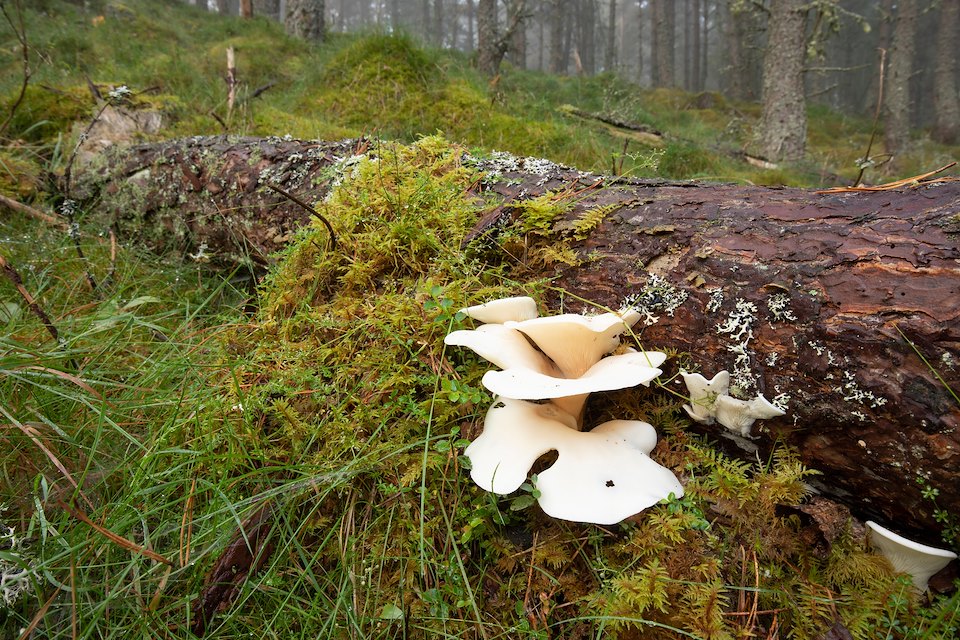
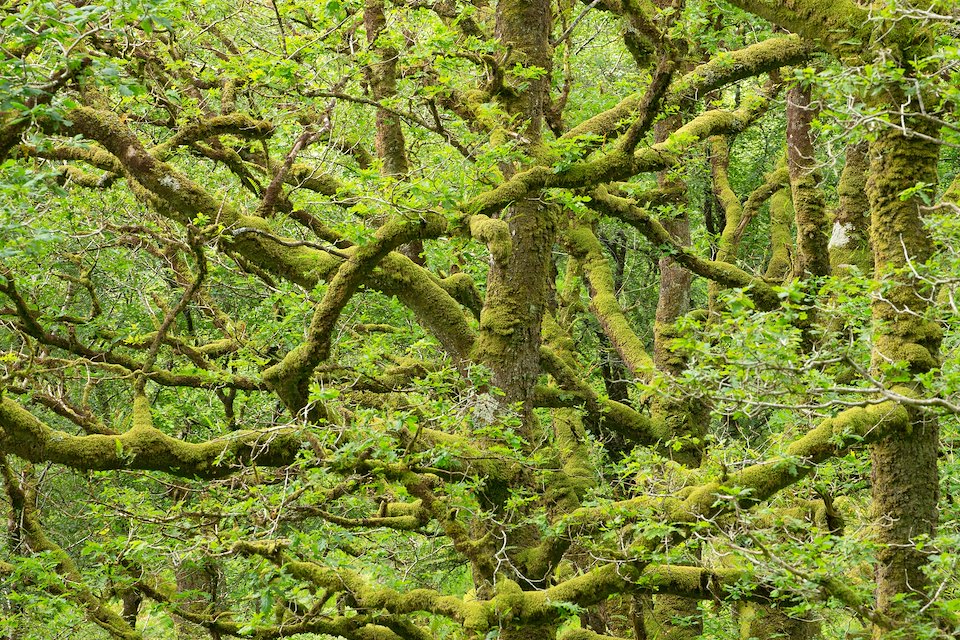
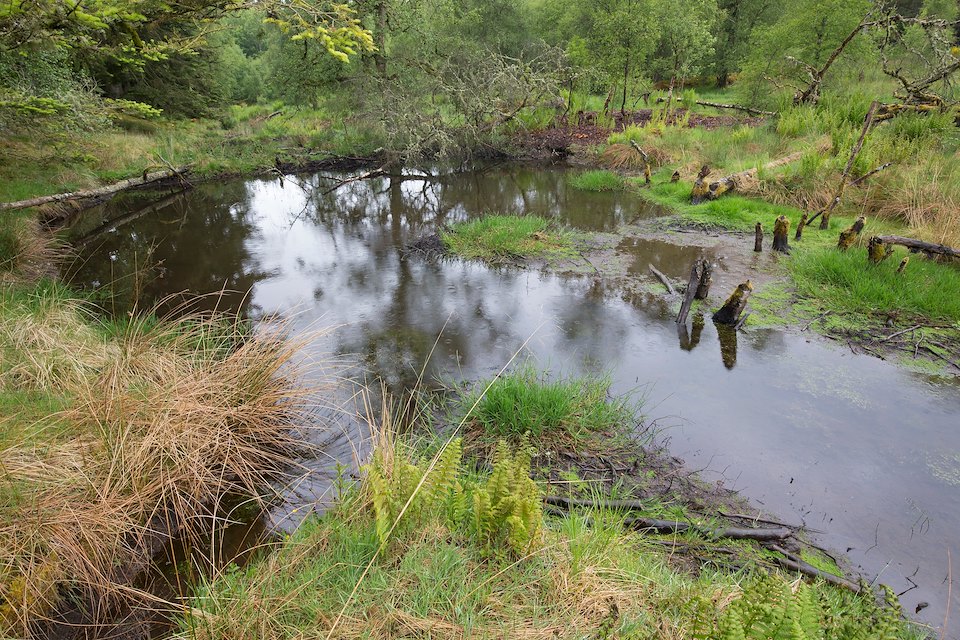
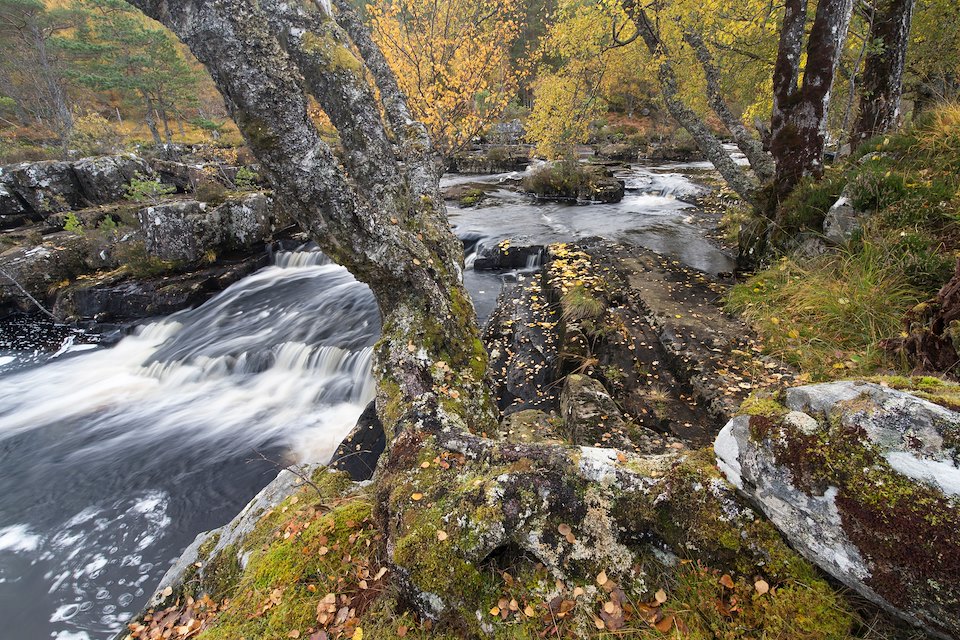
In other parts of the world, the connectivity between river, forest and ocean, and the bountiful runs of salmon that still persist, creates a living, breathing, working system. Here in Scotland, just 3% of our native forest remains, clinging on in isolated, lonely fragments and despite their reputation for beauty and drama, the glens through which our rivers run, are often bare and treeless, reflecting the centuries of ecological decline that we have come to accept as normal.
Within these rivers, there is a modern-day canary in the mine: the Atlantic salmon – the King of Fish. These remarkable global travellers so beloved of anglers worldwide, are in crisis. They embody all the challenges woven into the climate and biodiversity emergencies. They are susceptible to almost every human impact - aquaculture, over-fishing, pollution, water abstraction and artificial barriers, such as large dams and weirs. But it is their reliance on cold, clean water that makes them increasingly vulnerable to changing climatic conditions. Many of Scotland’s salmon rivers are getting warmer, due in part, to the absence of the woodlands that once shaded and nourished them. The complex, ancient relationship between fish and forest, is broken.
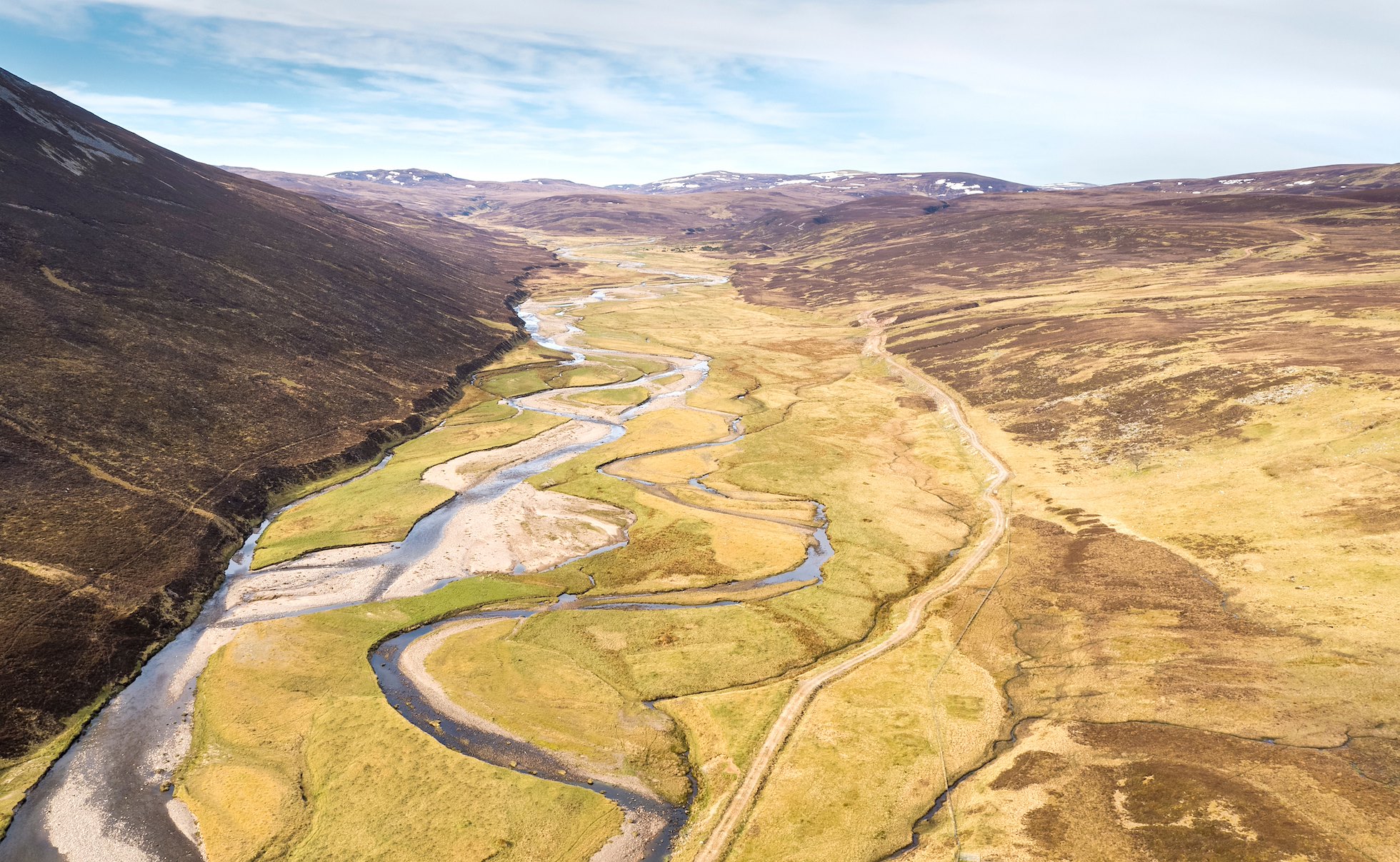
The glens through which our rivers run, are often bare and treeless, reflecting the centuries of ecological decline that we have come to accept as normal.
Our image of salmon is one of a titanic fish leaping major waterfalls, but more than 90% of the entire Atlantic salmon population measures under 12cm. Born in a bed of gravel wherever there’s a suitable flow, young salmon can be found high up in the hills and right through the system, spending up to seven years in their home river feeding on a wide range of aquatic life, before journeying down through the lochs, from the tributaries into the main river stem, into the estuaries, traversing the inshore waters and then on out to the open ocean. If all goes well, sometime in the following five years or so, they’ll return as adult salmon ready to give life to the next generation. With some returning adults hanging about in the river for nearly two years before spawning, at any given time, the vast majority of the world’s salmon are found in river systems. Such a statistic should focus our minds, not only on the health of our rivers, but the landscapes through which they flow.
"When juvenile salmon start to struggle, we know we've really got problems in a river system."
Susan Cooksley, River Ecologist
The Highlands of Scotland are not generally noted for their warm weather, but even Highland rivers are now reaching temperatures that can kill salmon. Thermal maps produced by Marine Scotland Science using temperature loggers, tell an alarming story: we may have as little as 30 years before rising temperatures make these rivers - in their current wide, shallow and crucially, unshaded state - uninhabitable for salmon.
Salmon eggs can survive winter temperatures up to a maximum of 16°C. The New Year of 2022 saw us very close to that limit, thanks to a flow of warm subtropical air from the Azores. While air temperatures don’t immediately reflect water temperatures, sustained periods of warmer winter weather will jeopardise egg survival.
Both young and adult salmon struggle at anything above 20°C. Above 23°C and the adults can’t find the energy to put on that burst of speed they need to leap the falls. Salar, the leaper, their scientific name, becomes stranded downstream. Young salmon at the same temperature suffer thermal stress, stop feeding and seek out the shade provided by overhanging trees and submerged roots. Where there are none, they may be forced to share their space with bigger fish, and risk becoming lunch. With the Met Office warning that warm weather records are being broken nine times more frequently than in the past- the signs of a changing climate are clear.
Salmon eggs can survive winter temperatures up to a maximum of 16°C. The New Year of 2022 saw us very close to that limit, thanks to a flow of warm subtropical air from the Azores. While air temperatures don’t immediately reflect water temperatures, sustained periods of warmer winter weather will jeopardise egg survival.
Both young and adult salmon struggle at anything above 20°C. Above 23°C and the adults can’t find the energy to put on that burst of speed they need to leap the falls. Salar, the leaper, their scientific name, becomes stranded downstream. Young salmon at the same temperature suffer thermal stress, stop feeding and seek out the shade provided by overhanging trees and submerged roots. Where there are none, they may be forced to share their space with bigger fish, and risk becoming lunch. With the Met Office warning that warm weather records are being broken nine times more frequently than in the past- the signs of a changing climate are clear.
"Some upland burns are reaching summer temperatures of 27 degrees - not far off the lethal limit for juvenile salmon."
Edwin Third, Rivers Manager
The reasons behind the perilous plight of Scotland’s Atlantic salmon are complex, but our rivers and the life within them are crying out for trees. Shade is an obvious antidote to rising water temperatures and a lifeline for young fish, but river, or ‘riparian’, woodland, does so much more. The roots of trees like alder and willow, which can live in the water, protect fish from the sun and provide hidey-holes during high flow events. Tree roots help stabilise riverbanks, reducing erosion and avoiding fine sediment choking the oxygen out of redds (salmon nests). Bank erosion and lack of deadwood in river channels, can result in rivers becoming wider and shallower. This increases evaporation and leads to the loss of deep pools and riffles, depriving salmon of the structurally diverse riverbeds they favour. A lack of overhanging trees also reduces insect numbers which in turn, means less food falling from branches into the mouths of hungry fish.
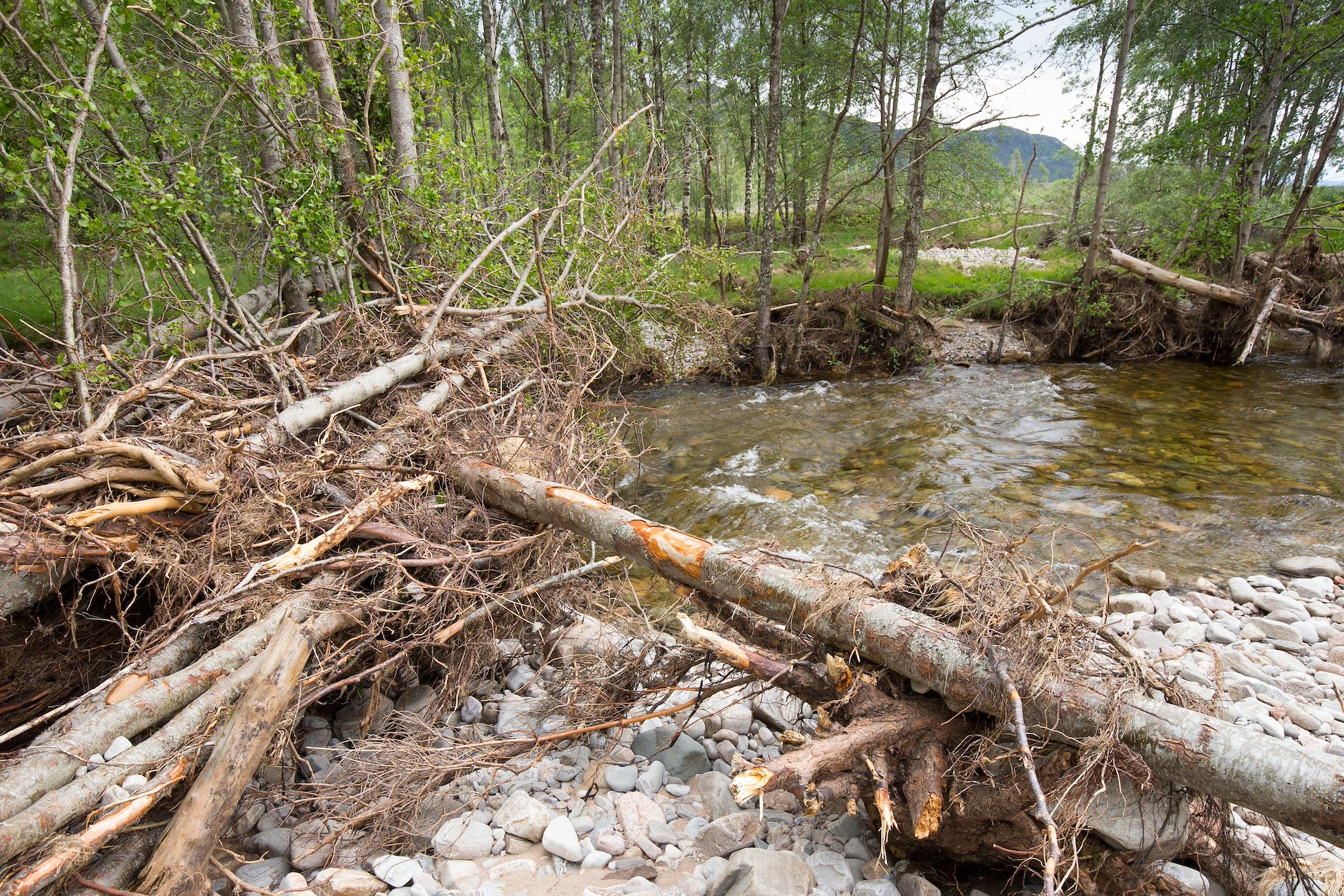
A complex mix of trees, shrubs and understorey plants guarding the river corridor and stretching out over the watersheds into the wider catchment, stores carbon and means more rainwater and snow melt is absorbed - the land becomes more like a sponge than a billiard table. Retaining more water for longer in wet woodland, peatlands and boggy glades, slows and filters run-off, and reduces the extremes of flooding and drought.
It’s clear that we urgently need to get trees back on our riverbanks. Natural regeneration fed by the seed of existing native woodland, works best but for this to viable, there needs to be a seed source nearby and limited grazing pressure. In many parts of Scotland, despite the desire to see more salmon, land managers choose to support high deer and sheep numbers that nibble young saplings before they can get above a few inches. Fencing and planting is often the go-to action, but ecologically this compromises the subtle, nuanced and intricate natural processes that shape and govern the healthiest of forests, where canopy, understorey, shrub and herb layer, and all the plethora of life that exists within the soil, provide living space for myriad creatures. There’s a big difference between just ‘trees’ and the intricate woodland systems that salmon evolved alongside.
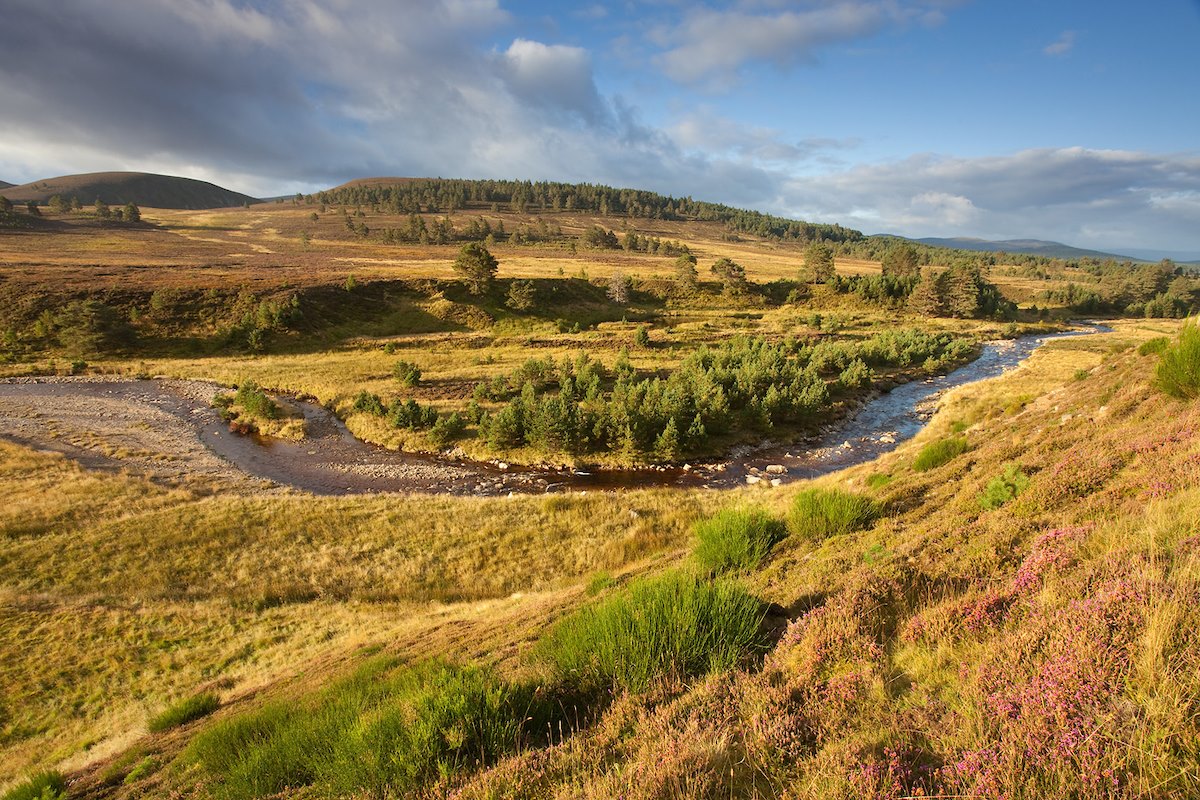
Natural regeneration is being encouraged in many parts of the Cairngorms where grazing pressure no longer overwhelms the ability of woodland to recover.
"It's becoming more apparent that the survival of salmon at sea is also linked to the conditions in our rivers."
Chris Conroy, Fish Ecologist
Despite the sensationalist headlines within our popular media, nobody is advocating for wall-to-wall tree cover across the whole of Scotland, and especially not serried ranks of exotic conifers, but what if say, 30% of our landscape was re-wooded? This would still fall short of the European average of 37%, but repopulating our rivers and glens with native trees, would take us a significant way towards climate resilience and provide a huge boost in biodiversity to our river systems. It would also demonstrate that Scotland – a country that claims to be a global leader in climate action – is willing to venture beyond the rhetoric to practical action.
The King of Fish is not only the angler’s ultimate prize, but a key building block in a complex forest ecosystem. But in return, salmon need the support of a rich and diverse landscape that stretches far beyond the banks of the river. For now, this magnificent creature, so intertwined with Scotland’s history and culture, finds itself in hot water; threatened like never before

